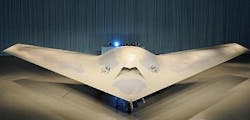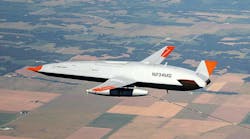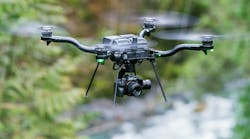PATUXENT RIVER NAS, Md., 16 Aug. 2013. Four major U.S. defense contractors remain in the running to build a future fighting unmanned aerial vehicle (UAV), yet as this project moves forward, its future may be in doubt, say naval experts.
Four companies received $15 million contracts this week for preliminary design review (PDR) assessments in the Navy's Unmanned Carrier Launched Airborne Surveillance and Strike (UCLASS) aircraft program.
Companies receiving contracts late Wednesday are Northrop Grumman Corp. in El Segundo, Calif.; Lockheed Martin Corp. in Palmdale, Calif.; the Boeing Co. Defense, Space & Security segment in St. Louis; and General Atomics in Poway, Calif.
Congress requires a program design review as a necessary step in any major defense acquisition program. Once development moves forward, major acquisition programs have three phases: technology development, engineering and manufacturing development (EMD) , and production and deployment. The program design review assessment comes between technology development and EMD.
The four companies involved in the UCLASS program are winding up technology development. the company making the biggest splash so far has been Northrop Grumman, which is developing the X-47B. That combat UAV prototype made an arrested landing on a Navy aircraft carrier last month, which was the first time a UAV performed that feat.
Boeing is developing the Phantom Ray UAV for the UCLASS program. The Lockheed Martin UCLASS concept integrates technologies from F-35C jet fighter, RQ-170 Sentinel UAV and other operational systems. General Atomics, meanwhile, is developing the Sea Avenger for the UCLASS program, a turbofan jet-powered version of the company's venerable MQ-1 Predator UAV.
These efforts, however, ultimately may be for nothing more than proving the technology for taking off and landing UAVs on aircraft carriers.
The publication Flightglobal ran a story this week during the 2013 Association of Unmanned Vehicle Systems International (AUVSI) trade show and conference in Washington that cast doubt on the future of the Navy's UCLASS program is it is currently structured.
The story on page 14, headlined UCLASS gets too simple for its own good? says the UCLASS designs have been so watered down from the original concept that the program now is vulnerable to cancellation as Pentagon leaders tighten the nation's military budget.
The Flightglobal story, which appeared in an edition of the AUVSI show daily, quotes retired Navy Adm. Gary Roughead, former chief of naval operations, explaining that the current design is less expensive, less survivable, and has less endurance than the original concept, which called for a stealthy carrier-based long-range bomber with a big weapons payload and air-to-air refueling capability.
"The idea of a long-dwell, long-range, refuellable, survivable UAV coming off a carrier was extremely important," the Flightglobal story quoted Roughead. The current UCLASS concept is modestly stealthy and emphasizes intelligence, surveillance, and reconnaissance (ISR) missions over lightly contested air space. Roughead suggested in the story that this current concept of the UCLASS adds little to the Navy's fleet capabilities.
Navy officials say each of the four companies has a comprehensive, UCLASS design. Navy experts will conduct preliminary design review evaluations in fall 2014. Subcontracting opportunities may be available, Navy officials say.
These preliminary design reviews may lead to final selection of one contractor in 2016 for full-scale UCLASS development, production, and deployment -- if the program is not cancelled before that. Current Navy plans call for the UCLASS fighting UAV to be ready for deployment aboard aircraft carriers in 2020.



